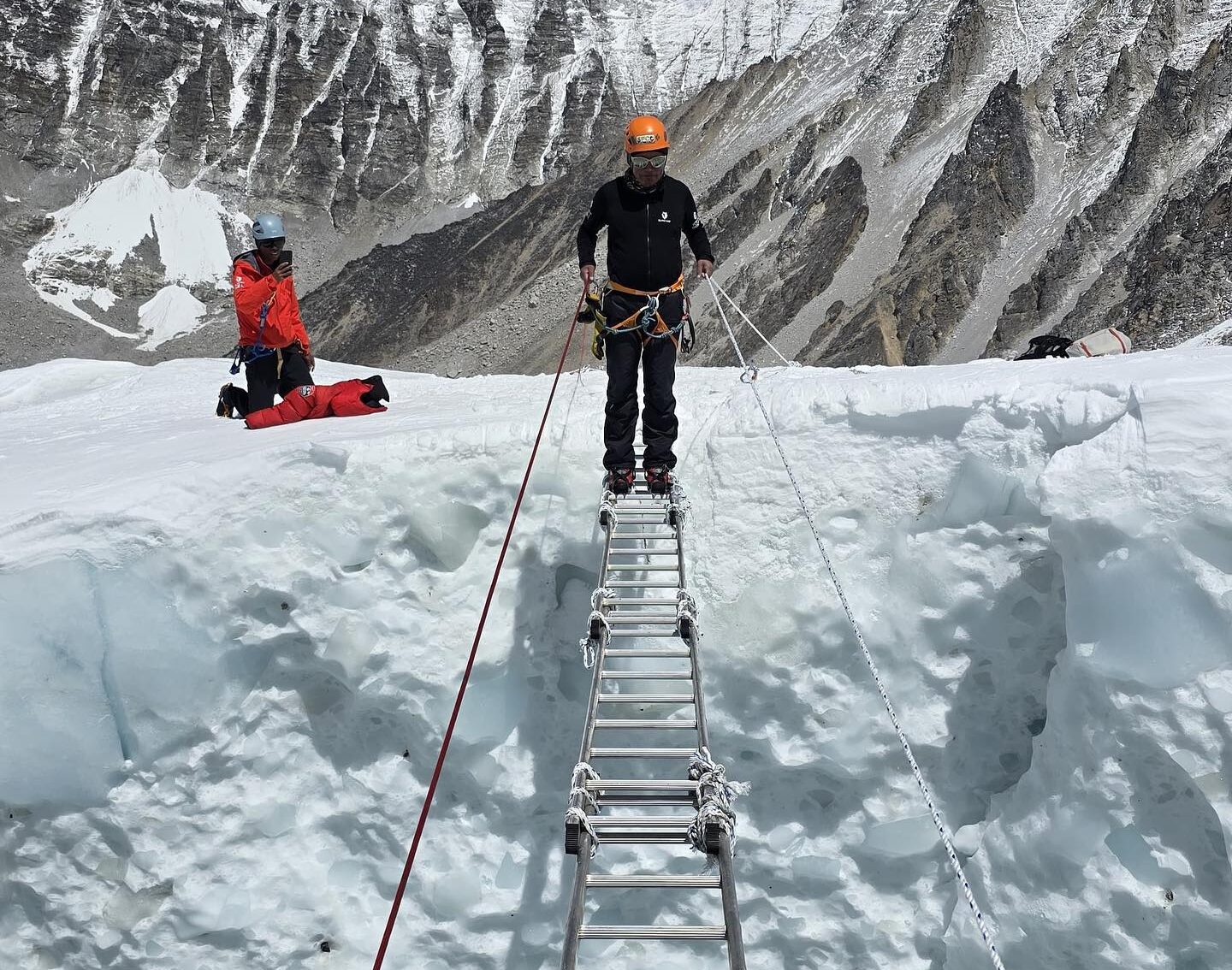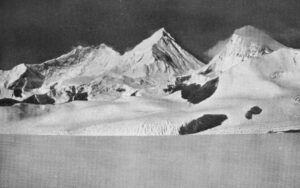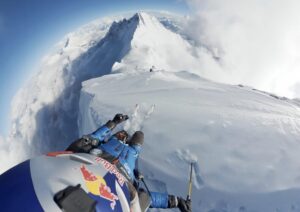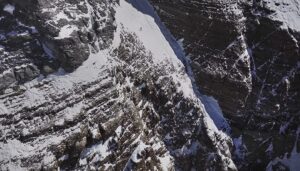Most teams are now settled into Everest Base Camp on the South Side. Meanwhile, on the North Side in Tibet, everything is ready, and international teams will start climbing within a few days.
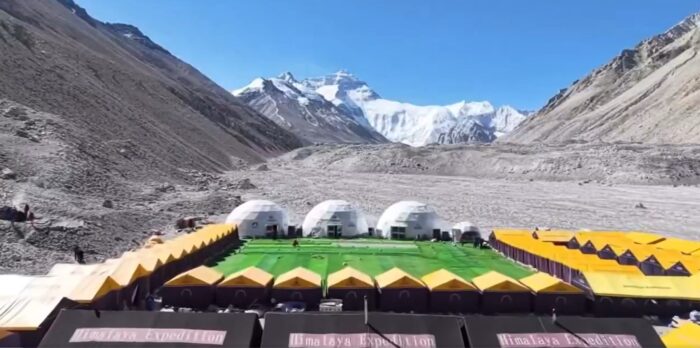
Everest North Side Base Camp. Photo: Tibetan World
Base Camp is fully operational in Tibet (check a video here), and teams are ready to move there in the next few days. Climbers will then move to Advanced Base Camp at 6,400m. This is the altitude of Camp 2 on the South Side of the mountain. Climbalaya Treks & Expeditions told ExplorersWeb that their Sherpa team will enter Tibet tomorrow.
South Side: en route to Camp 4
After strong winds halted progress for some days, the 8K Expeditions Sherpa team has reached Camp 3 on the Lhotse Face. They plan to reach the South Col and set up Camp 4 by the end of the week, founder Pemba Sherpa told ExplorersWeb from Base Camp.
Clients are now celebrating puja ceremonies before beginning rotations to Camp 2. Although they are not the biggest group in Base Camp, 8K has 47 Everest and 15 Lhotse climbers, not counting the Sherpa staff. Pemba notes that their clients include three Nepalese nationals.
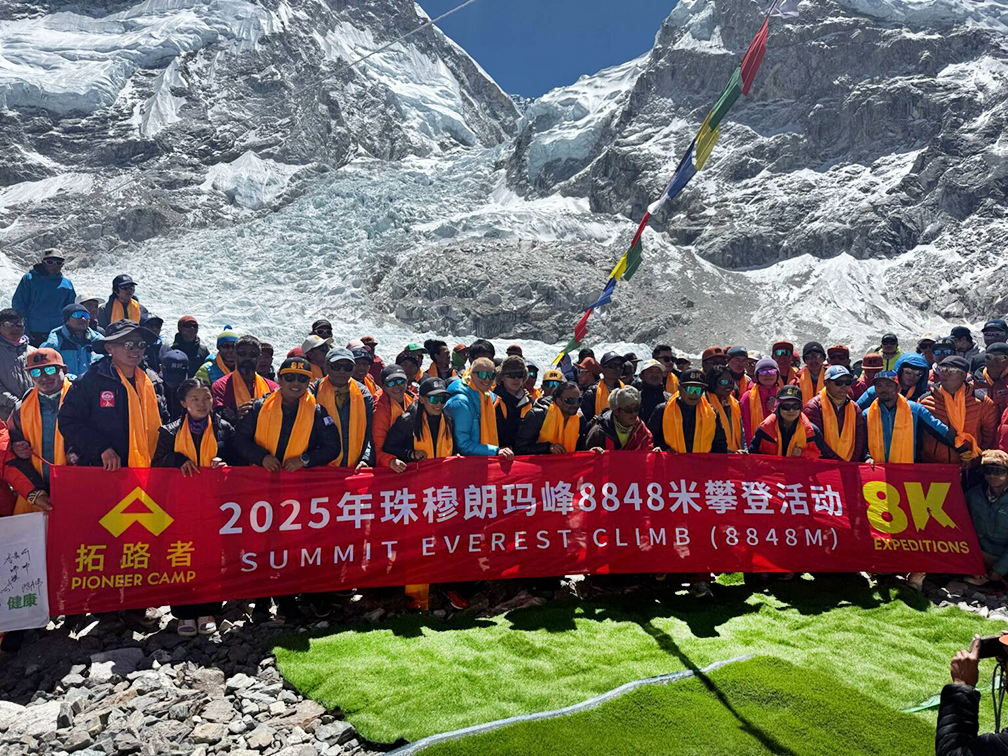
A big Chinese team, outfitted by 8K Expeditions, in Everest Base Camp. Photo: Pemba Sherpa
Numbers update
Nepal’s Department of Tourism is not updating its list of permits punctually. Today, they posted a week-old list of permits until April 16. There, the number of permits has reached 311 for Everest and 43 for Lhotse. That’s still far from the nearly 500 expected by agencies.
There are also 30 Nuptse permits. Some of these belong to climbers who want to reach its 7,855m summit, while others may be aiming just to reach Camp 2, which it shares with Everest.
Finally, there is a four-member permit for Lingtren, the pyramid-shaped peak at the end of Base Camp, between Everest’s West Shoulder and Pumori. Last year, a permit for that peak went to a group from EliteExped. The company explained that the Lingtren permit allowed them to stay, relatively inexpensively, in Everest Base Camp for some training.
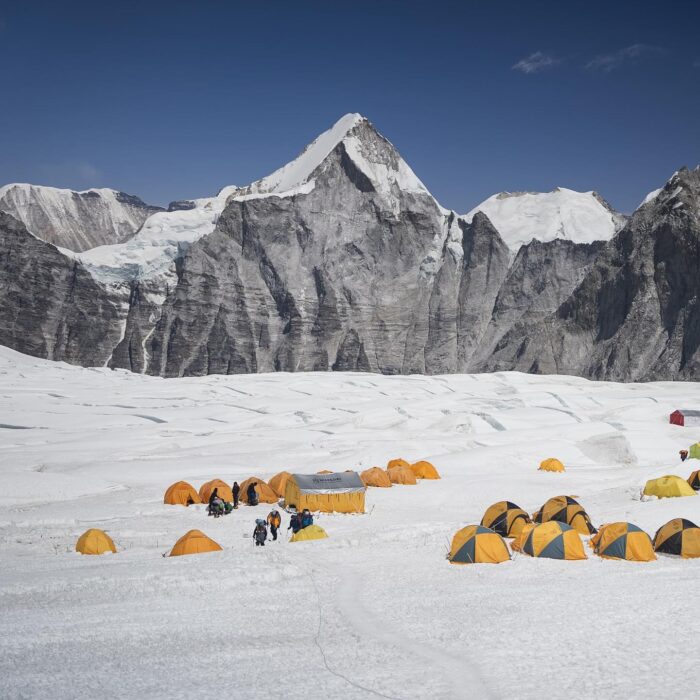
Everest Base Camp, with Lingtren behind. Photo: Elite Exped
Almost all teams have now settled into Base Camp, except for a few groups who plan to arrive later in the season or are currently acclimatizing on one of the Khumbu 6,000’ers, such as Mera Peak.
Egloff’s daily run
One of the recent Mera summiters is Ecuador’s Karl Egloff, preparing for his no-O2 FKT attempt on Everest. So far, he has climbed Mera Peak four times. Among them, he achieved the Fastest Known Time on the 6,460m Central summit from Khare. He also linked the Central and the 6,467m North summits on another day excursion, and climbed twice more, despite high winds.
More no-oxygen attempts
In addition to skyrunners Karl Egloff and Tyler Andrews, other no-O2 climbers on Everest include Piolet d’Or winner Valery Babanov. Babanov has already hurried up to Camp 2, from which he posted a video of a blissfully empty Western Cwm.
Caroline Leon, born in Australia and currently living in the Middle East, hopes to become the first Australian woman to summit Everest no-O2, Tony Hackett told ExplorersWeb. Fifteen years ago, Leon had a life-threatening rock climbing accident that required 14 surgeries and two years in a wheelchair. She was on crutches for two more years as she learned to walk again. Now she is engaged in a Seven Summits round, which includes climbing Everest the hard way.
Batard at work again
Marc Batard of France has also become a regular at Everest (or rather, Nuptse) Base Camp. Once again, he is trying to open an alternative route to Camp 2 across the flank of Nuptse, setting up permanent belays, steps, and a via-ferrata-style cable. The goal is to avoid the Khumbu Icefall, thus providing a safer route for working staff and climbers. As he discovered in previous years, it is not an easy task, since the lower flanks of Nuptse are technically difficult and exposed to avalanches and rockfall.
